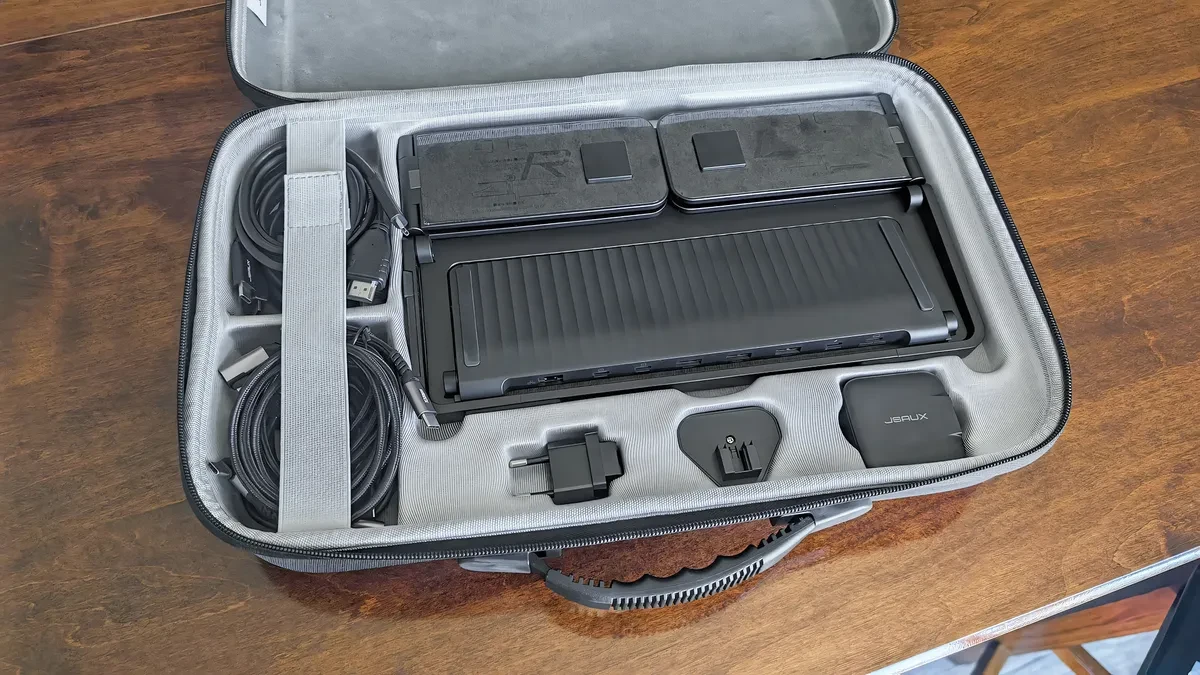JSAUX FlipGo Horizon: Is a portable dual screen worth the investment?
JSAUX FlipGo Horizon detailed review: Flexible dual-screen solution boosts productivity, but has some limitations in setup and display quality.
The JSAUX FlipGo Horizon is a portable dual-screen setup that promises to solve the productivity problem of working on a single laptop screen. While the idea offers significant flexibility and does indeed improve performance, the product still has some room for improvement in terms of setup and display quality.
Versatile design and complete accessory set
The JSAUX FlipGo Horizon Pro, starting at $499, comes packaged with a host of accessories. You’ll get two monitors, a Snap Stand Pro, a hard-shell carrying case, a separate monitor pouch, a charger, a variety of cables (four USB-C, two mini HDMI), and other essential tools. The variety of cables allows for flexible connection to a laptop via USB-C, HDMI, or a combination of both.

Each monitor has two square indents on the back that allow it to magnetically attach to the metal stand. This mechanism holds the monitor pretty securely, though it can sometimes take a bit of time to align. The included hard-shell carrying case is also a big plus, protecting the entire device during travel, despite the overall weight.
Real-world experience: Flexible but not perfect
The biggest advantage of the FlipGo Horizon is its flexibility. Users can set up the display system in many different modes: two horizontal screens, two vertical screens, a combination of both, stacked, or just using a single screen. This meets a wide range of work needs, from spreadsheet processing to entertainment.

However, this flexibility comes with some complexity during installation. Switching between modes requires adjusting the stand in different ways, a process that can be time-consuming and unintuitive at first. In particular, the stacking mode requires the use of a small kickstand, which can be unstable on uneven surfaces.
Display quality and connectivity
Technically, each screen has a resolution of 1920 x 1080 and a refresh rate of 60Hz, which is sharp enough for regular office work. However, the display quality is only average. Colorimetric results show that the screen only reaches 80% sRGB and the maximum brightness is quite modest at 250 nits. This is enough for general tasks but not suitable for creative people who require high color accuracy.

The system supports a variety of connectivity options via USB-C and mini HDMI. It's a good thing that the included USB-C cables have an L-shaped end, which makes for neater wiring. Pass-through charging is also useful, allowing you to power both your laptop and monitor with a single charger. You can easily adjust brightness, contrast, and other settings via the menu button on the side of the monitor.
Compatibility issues and final version
There were some compatibility issues during testing of the pre-production version. When connected to the HP OmniBook X and Lenovo Legion 9i laptops, the screen flickered and displayed errors. However, JSAUX acknowledged the feedback and said that this was likely due to the device misrecognizing the resolution. The final commercial version that was later sent out no longer had the same issues, suggesting that the issue has been resolved.
Who should consider the JSAUX FlipGo Horizon?
The JSAUX FlipGo Horizon is a great option if you're a frequent traveler, need a larger workspace, and appreciate flexibility in how you arrange your screen. The full set of accessories and protective carrying case are great for this purpose.
On the other hand, if you just need an extra monitor, don’t require complex display modes like portrait mode, or prefer a simple and quick solution, there may be other options on the market that are more suitable. The complexity of setup can be a barrier for those who don’t want to spend a lot of time on installation.
